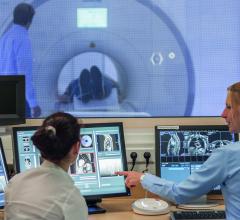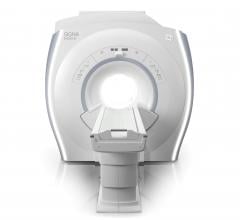Konica Minolta Inc. announced that it has developed the SPFS Immunoassay System, capable of highly sensitive measurements based on the fluorescent antibody technique. A prototype will be on reference exhibit at MEDICA 2015, the world’s largest international medical equipment fair in Dusseldorf, Germany, Nov. 16-19, 2015.
Today, magnetic resonance imaging (MRI) allows more gentle, precise and cost-effective heart disease diagnosis. However, the method has limitations when examining children and patients with cardiac arrhythmia. A joint project of the Fraunhofer Institute for Medical Image Computing MEVIS and the Max Planck Institute for Biophysical Chemistry promises a solution for these limitations. Experts were able to accelerate the image acquisition process and expand the method’s applicability.

There is a growing need to exchange and share imaging studies with outside entities. Hospitals that have foregone the ...
Providing exceptional cardiovascular care for patients to achieve the best possible outcomes is the number one goal for ...
Merit Medical Systems Inc. and its ThinkRadial education program now offers a new vascular training model at events throughout the world.
Kopp Development Inc. announced the release of the new accessory for their latest magnetic resonance imaging (MRI) entryway system, FerrAlert Ferromagnetic Incident Log Manager (FILM). This logging device was designed specifically with The New Joint Commission standards in mind. In addition, it is a great tool to assist with internal root cause analyses, according to the company.
Philips announced its collaboration with UCHealth, an integrated delivery network of five hospitals in Colorado and more than 100 ambulatory locations across three states, to consolidate and standardize UCHealth’s electronic health records (EHR), voice recognition systems and PACS onto specialized platforms for radiology and cardiology.
Cardiac positron emission tomography (PET) is growing in popularity among cardiologists because it provides the ability ...
GE Healthcare’s Molecular Imaging business will showcase the Discovery IQ positron emission tomography/computed tomography (PET/CT) platform at this year’s Radiological Society of North America (RSNA) annual meeting, delivering both outstanding image quality and intelligent quantitation.

We are approaching 20 years since the introduction of endoscopic vein-graft harvesting (EVH) as a method of vessel ...
November 16, 2015 — At the Radiological Society of North America (RSNA) 2015 annual meeting, GE Healthcare will unveil ...
When performing radiofrequency (RF) ablation to treat cardiac arrhythmia, medical professionals must balance the safety ...

One-third of ischemic strokes are classified as cryptogenic. The classic risk factors for stroke are usually absent ...
At this year’s Radiological Society of North America (RSNA) annual meeting, GE Healthcare is showcasing continued advancements in magnetic resonance imaging (MRI) technologies. In the spirit of GE MR’s Continuum strategy, the company will showcase advanced applications as well as the Signa Pioneer 3.0T, Signa Explorer and Signa Creator 1.5T MRI scanners.
A new study appearing in STEM CELLS Translational Medicine (SCTM) describes a highly efficient, protein-based method for turning fibroblasts — the most common cells in connective tissue — into cardiac progenitor cells (CPCs). The results could lead to a much-needed new source of cells for regenerating the heart. Equally exciting is that the technology also converts the fibroblasts directly to CPCs, skipping an in-between and significantly speeding up the process.
Change Healthcare Cardiology Hemodynamics is an integrated hemodynamic monitoring system for monitoring vital signs and ...
Chest pain in female-pattern heart disease is linked with abnormal heart blood flow, a new Cedars-Sinai Heart Institute study shows. The effect was demonstrated with a drug commonly used to alleviate chest pain patients with coronary artery disease, which was found to be ineffective in patients with moderate female-pattern heart disease, but may offer some relief for sicker patients.
Preventing blood clots with drugs such as heparin has become a common practice for fighting some heart and lung conditions, and for certain surgeries. But patients who take them also need their blood to clot to heal incisions made during operations. Researchers are developing a new way to tackle this problem — by pairing snake venom with nanofibers. Their study using the therapy on rats appears in the journal ACS Biomaterials Science & Engineering.
November 12, 2015 — A pharmacist-physician collaborative effort to control blood pressure among a diverse group of ...

 November 18, 2015
November 18, 2015












